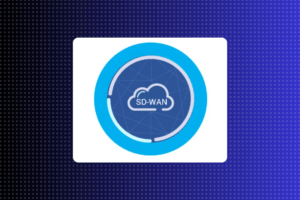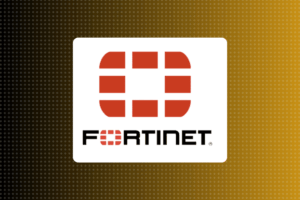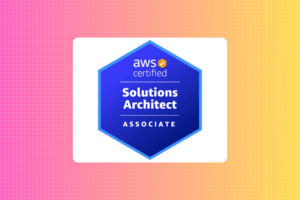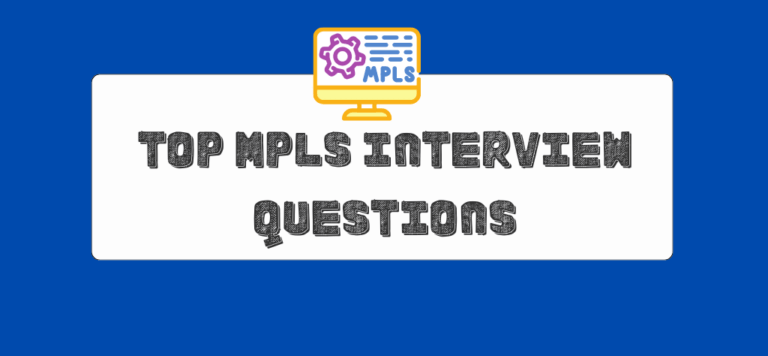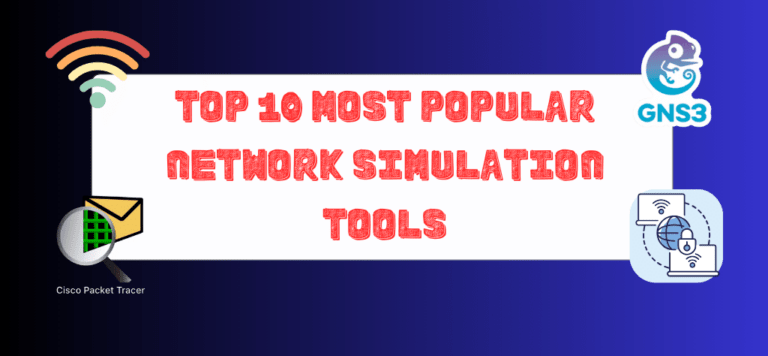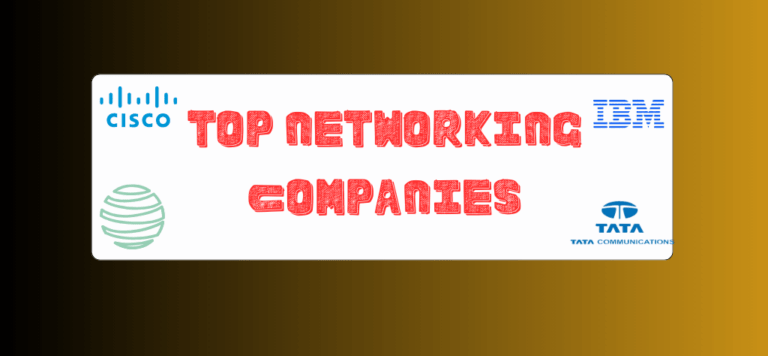Introduction
Are you gearing up for a CCIE interview and feeling the pressure? Fear not, as this comprehensive guide is tailored to equip you with the essential knowledge and insights to tackle CCIE interview questions effectively.
What is CCIE?
CCIE, or Cisco Certified Internetwork Expert, is a prestigious certification validating expert-level skills in networking technologies. It’s a testament to a professional’s proficiency in designing, implementing, and managing complex networking solutions.
Importance of CCIE Certification
Achieving CCIE certification opens doors to lucrative career opportunities and signifies a deep understanding of networking technologies. Employers worldwide recognize CCIE as a gold standard, making it a valuable asset for networking professionals.
List of 200 CCIE Interview Questions
What is the OSI model, and can you explain each layer?
Differentiate between a hub, switch, and router.
Explain the concept of subnetting and supernetting.
What is the purpose of VLANs?
Describe the difference between TCP and UDP.
What is the purpose of ARP (Address Resolution Protocol)?
Explain the role of a default gateway.
What is the purpose of ICMP?
Describe the difference between a collision domain and a broadcast domain.
What is the purpose of NAT (Network Address Translation)?
Explain the difference between static and dynamic routing.
What is OSPF, and how does it work?
Describe the purpose of BGP (Border Gateway Protocol).
How does EIGRP (Enhanced Interior Gateway Routing Protocol) work?
What is the purpose of STP (Spanning Tree Protocol)?
Explain the difference between layer 2 and layer 3 switching.
What is HSRP (Hot Standby Router Protocol)?
Describe the purpose of VRRP (Virtual Router Redundancy Protocol).
What is the difference between access lists and prefix lists?
Explain the purpose of route summarization.
What is the purpose of VLAN pruning?
Explain the concept of VTP (VLAN Trunking Protocol).
Describe the difference between STP and RSTP.
What is EtherChannel, and how does it work?
Explain the purpose of QoS (Quality of Service) in switching.
What is the purpose of port security?
Describe the difference between cut-through and store-and-forward switching.
What is multicast routing?
Explain the purpose of private VLANs.
What is the purpose of DHCP snooping?
Describe the purpose of ACLs (Access Control Lists).
What is the difference between stateful and stateless firewalls?
Explain the purpose of NAT and PAT in terms of security.
What is the purpose of AAA (Authentication, Authorization, and Accounting)?
How does 802.1X authentication work?
Describe the purpose of VPN (Virtual Private Network) technology.
What is the difference between IPSec and SSL VPNs?
Explain the concept of MAC filtering.
What is the purpose of a DMZ (Demilitarized Zone) in network security?
How does DDoS (Distributed Denial of Service) protection work?
What is the purpose of DNS (Domain Name System)?
Explain the role of DHCP (Dynamic Host Configuration Protocol).
Describe the purpose of NTP (Network Time Protocol).
How does SNMP (Simple Network Management Protocol) work?
What is the purpose of syslog?
Explain the concept of NetFlow.
Describe the difference between H.323 and SIP (Session Initiation Protocol).
What is the purpose of NAT64 and DS-Lite in IPv6 migration?
Explain the concept of anycast addressing.
What is the purpose of IP SLA (Service Level Agreement)?
What is MPLS, and how does it differ from traditional IP routing?
Describe the purpose of MPLS labels.
What is the difference between MPLS LDP and RSVP-TE?
Explain the concept of MPLS VPNs.
Describe the purpose of MPLS QoS (Quality of Service).
How does MPLS traffic engineering work?
What is the purpose of MPLS Layer 2 VPNs?
Explain the role of the MPLS control plane.
Describe the benefits of MPLS for service providers.
How does MPLS support traffic engineering?
What is the purpose of PPP (Point-to-Point Protocol)?
Describe the differences between HDLC and PPP.
Explain the concept of Frame Relay.
What is the purpose of ATM (Asynchronous Transfer Mode)?
Describe the difference between MPLS and ATM.
How does GRE (Generic Routing Encapsulation) work?
What is the role of VRF (Virtual Routing and Forwarding) in MPLS?
Explain the purpose of DMVPN (Dynamic Multipoint Virtual Private Network).
Describe the advantages of using Metro Ethernet as a WAN technology.
What is the purpose of BFD (Bidirectional Forwarding Detection)?
What are the benefits of IPv6 over IPv4?
Explain the IPv6 addressing format.
Describe the purpose of IPv6 neighbor discovery.
What is the purpose of IPv6 transition mechanisms?
How does IPv6 routing differ from IPv4 routing?
Explain the concept of IPv6 multicast.
Describe the purpose of ICMPv6.
What is the role of MLD (Multicast Listener Discovery) in IPv6?
How does dual-stack configuration work in IPv6?
What is the purpose of 6to4 tunneling in IPv6?
Explain the concept of hierarchical network design.
What are the considerations for designing a scalable network?
Describe the purpose of redundancy in network design.
How does load balancing contribute to network design?
Explain the difference between network segmentation and isolation.
What is the role of convergence in network design?
Describe the considerations for designing a secure network.
Explain the importance of scalability in network design.
What are the challenges of designing a network for high availability?
Describe the principles of modular network design.
How do you approach network troubleshooting?
Explain the use of ping and traceroute in troubleshooting.
What is the purpose of debugging commands in Cisco devices?
Describe the steps to troubleshoot a network connectivity issue.
How do you troubleshoot a routing problem?
Explain the purpose of the show commands in Cisco devices.
What are the common causes of packet loss in a network?
Describe the steps to troubleshoot a slow network.
How do you troubleshoot a VLAN-related issue?
Explain the role of syslog and SNMP in network troubleshooting.
What is network automation, and why is it important?
Describe the benefits of using Ansible for network automation.
How does REST API contribute to network automation?
What is the purpose of NETCONF and YANG in network automation?
Explain the concept of Infrastructure as Code (IaC) in networking.
How does Python contribute to network automation?
Describe the role of SDN (Software-Defined Networking) in automation.
What is the purpose of CI/CD (Continuous Integration/Continuous Deployment) in networking?
How do you handle version control in network automation?
Describe the considerations for implementing network automation securely.
Explain the basic principles of wireless networking.
What is the purpose of SSID (Service Set Identifier) in Wi-Fi networks?
Describe the differences between 2.4 GHz and 5 GHz Wi-Fi bands.
How does WPA3 improve Wi-Fi security?
What is the purpose of a wireless controller in enterprise networks?
Explain the concept of roaming in wireless networks.
How do you mitigate interference in a wireless network?
Describe the role of MIMO (Multiple Input Multiple Output) in Wi-Fi.
What is the purpose of DFS (Dynamic Frequency Selection) in Wi-Fi?
Explain the considerations for designing a secure wireless network.
What is the purpose of VoIP (Voice over Internet Protocol)?
Describe the differences between SIP and H.323 in voice communication.
How does QoS impact voice and video traffic in a network?
What is the purpose of a SIP proxy server?
Explain the concept of video conferencing in collaboration networks.
How does Cisco Unified Communications Manager work?
Describe the role of codecs in voice and video communication.
What is the purpose of CAC (Call Admission Control) in VoIP networks?
How do you troubleshoot poor voice quality in a network?
Explain the considerations for securing voice and video communication.
What is cloud computing, and how does it impact networking?
Describe the differences between public, private, and hybrid clouds.
How does SD-WAN (Software-Defined Wide Area Networking) work in cloud environments?
What is the purpose of a cloud service provider’s network infrastructure?
Explain the concept of edge computing and its impact on networking.
Describe the role of load balancing in cloud environments.
How do you ensure security in a cloud-based network?
What is the purpose of VPC (Virtual Private Cloud) in cloud networking?
Explain the considerations for network performance in the cloud.
How does cloud orchestration contribute to network management?
What are the key components of a data center network?
Describe the purpose of virtualization in data center networking.
How does VXLAN (Virtual Extensible LAN) work in data centers?
What is the role of a spine-leaf architecture in data center design?
Explain the concept of network fabrics in data centers.
Describe the benefits of using Cisco ACI (Application Centric Infrastructure).
How does FCoE (Fibre Channel over Ethernet) work in data centers?
What is the purpose of load balancing in a data center network?
Explain the considerations for disaster recovery in data center networking.
Describe the role of network automation in data center operations.
What is the purpose of Cisco IOS (Internetwork Operating System)?
Describe the differences between Cisco Catalyst and Nexus switches.
How does Cisco ISR (Integrated Services Router) differ from ASR (Aggregation Services Router)?
Explain the purpose of Cisco ASA (Adaptive Security Appliance).
What is the role of Cisco Firepower in network security?
Describe the benefits of using Cisco Wireless LAN Controllers.
How does Cisco Nexus 9000 series support ACI?
What is the purpose of Cisco DNA (Digital Network Architecture)?
Explain the concept of Cisco Meraki in cloud-managed networking.
Describe the role of Cisco ACI in application-centric networking.
What is the purpose of network monitoring and management?
How do you measure network latency and throughput?
Explain the role of SNMP in network performance monitoring.
What is the purpose of NetFlow and sFlow in network analysis?
Describe the considerations for optimizing WAN performance.
How do you identify and troubleshoot network bottlenecks?
Explain the concept of Quality of Experience (QoE) in network performance.
What is the role of load balancing in optimizing network performance?
Describe the considerations for optimizing voice and video performance.
How do you ensure high availability in a network for optimal performance?
Explain the purpose of HTTP and HTTPS in networking.
What is the role of FTP (File Transfer Protocol) in data transfer?
Describe the differences between SMTP and POP3 in email communication.
How does SNMP contribute to network management?
Explain the concept of SIP (Session Initiation Protocol) in VoIP.
What is the purpose of DHCP in dynamic IP address assignment?
Describe the role of DNS in translating domain names to IP addresses.
How does BGP (Border Gateway Protocol) contribute to routing?
What is the purpose of ICMP in network communication?
Explain the concept of OSPF in dynamic routing.
Why is documentation important in network management?
Describe the components of a network documentation system.
How do you create and maintain network diagrams?
Explain the purpose of change management in network documentation.
What information should be included in network device documentation?
Describe the role of network monitoring tools in documentation.
How do you generate network performance reports?
Explain the concept of incident reporting in network management.
What is the purpose of configuration backups in network documentation?
Describe the considerations for disaster recovery documentation.
What are the current trends in networking and IT?
Describe the impact of 5G on network infrastructure.
How does the rise of IoT (Internet of Things) affect networking?
Explain the concept of edge computing and its role in networking.
What is the purpose of AI and machine learning in network management?
Describe the role of blockchain in networking.
How do quantum computing and networking intersect?
Explain the considerations for implementing Wi-Fi 6 in networks.
What is the role of zero-trust security in modern networks?
Describe the impact of the transition to IPv6 on networking.
Conclusion
Congratulations! You’ve navigated through the key aspects of CCIE interview CCIE Interview Questions. Now, armed with a solid understanding of the certification, its importance, and the pillars of success, you’re ready to shine in your interview.

